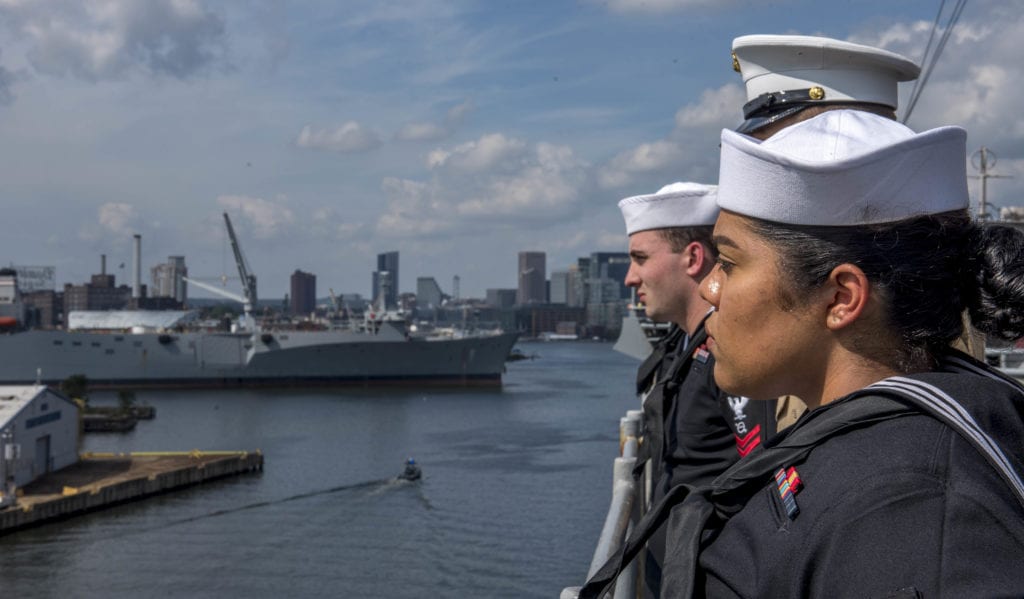
ARLINGTON, Va. — The Navy is working hard to solve a persistent manning shortage in its surface fleet, the commander of that force said in an address to the force.
“We need to man our ships to the right requirement across the OFRP [Optimized Fleet Readiness Plan], not just when they are ready to deploy,” said Vice Adm. Roy Kitchener, commander, Naval Surface Forces, speaking from San Diego in a video shown Jan. 12 during a webinar at the Surface Navy Association convention.
“We’re making progress with our manning issues, but many challenges remain,” Kitchener said. “We continue to fund more DDG [guided-missile destroyer] billets but it will take time for those Sailors to arrive on the waterfront. Our sea-duty gaps have been reduced to below 11,000 and that reduction is projected to continue to 7,500 by September 2021. But in the last fiscal year, we still resorted to 1,760 temporary personnel assignments to fill the remaining gaps for deployers.
“That is not a long-time solution,” Kitchener said. “It adds stress on our Sailors, and thereby the force.”
He pointed out that the manning readiness of a ship “has always been the product of a complex interplay of requirements and funding, inventory and distribution policies, fleet policies and actions, and the frictions between them. Ultimately, this readiness starts with getting the readiness requirement correct. The requirement must consider both in-port and at-sea work, including all of the maintenance you do.”
He added, “achieving an accurate distribution of manpower is not only important for the short-term ship employment but also to the long-term proficiency and experience of our technicians, operators and maintainers, which we need to better value.”
Kitchener is implementing an analytics-based project called Surface Manning Experience (SURFMEX), which “will define standard methodology for quantifying and tracking a Sailor’s proficiency and experience as they progress through those career-spanning training continuums.”
SURFMEX is intended to help assign Sailors “to the right places, first to learn, and then to perform.”
The project is designed to help distinguish between Sailors who attended a training course years ago and a Sailor who just graduated who look on paper to seem equally prepared for a demanding shipboard billet and to tracking and evaluating their individual fleet experience and proficiency.
Kitchener identified six ratings that will come under the SURFMEX project: sonar technician, Aegis fire controlman, gas turbine system technician (electrical and mechanical), quartermaster and engineman.
- SECNAV Advocates Increased Legal Immigration to Increase Shipbuilder Workforce - April 23, 2024
- Insitu Going Strong at 30, Focusing on Maritime Operations - April 8, 2024
- Navy Awards Boeing Additional Funds for MQ-25 Drones for Testing - April 3, 2024






